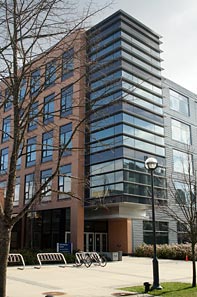My laboratory’s research activities are centered on the general areas of bacterial molecular biology, physiology and genetics, with an emphasis on the regulation of gene expression, and protein structure and function. Some of the techniques used are molecular cloning, gene fusions, site-directed mutagenesis, RNA analyses, and purification of proteins.
One area of research in my laboratory is on gene structure and expression in photosynthetic bacteria. We study changes in transcription initiation, mRNA processing and protein-protein interactions in response to environmental factors such as oxygen concentration and light intensity, and a newly discovered quorum sensing pathway.
The genomes of several species of purple photosynthetic bacteria are being sequenced, with complete or nearly complete sequences available at this time. We are using these and other DNA sequences to discover new genes, to investigate their regulation of expression, and the function of their protein products.
The crystal structures of several purple bacterial photosynthetic reaction centers and light-harvesting complexes have been solved and shown to be highly conserved. We are using this structural information to design and interpret site-directed mutagenesis experiments to address questions about how individual proteins bind to each other and to cofactors, and pathways of proton transfer within and between protein complexes.
We are also studying a novel bacteriophage-like genetic exchange element called the “gene transfer agent”, or GTA. The production of GTA is controlled by changes in environmental conditions that are sensed by a cellular signal transduction system, which produces a burst of GTA production in the stationary phase of laboratory cultures. The nature of the signal(s), and the identities and activities of regulatory factors are of great interest to us.
Finally, we are investigating the diversity and ecological activities of photosynthetic bacteria in aquatic environments ranging from stratified lakes to deep ocean hydrothermal vents.
Gene Regulation
One area of research in our laboratory is on gene structure and expression in photosynthetic bacteria. We study changes in transcription initiation, mRNA processing and protein-protein interactions in response to environmental factors such as oxygen concentration and light intensity, and a newly discovered quorum sensing pathway.
The genomes of several species of purple photosynthetic bacteria are being sequenced, with complete or nearly complete sequences available at this time. We are using these and other DNA sequences to discover new genes, to investigate their regulation of expression, and the function of their protein products.
Photosynthetic Reaction Center
The crystal structures of several purple bacterial photosynthetic reaction centers and light-harvesting complexes have been solved and shown to be highly conserved. We are using this structural information to design and interpret site-directed mutagenesis experiments to address questions about how individual proteins bind to each other and to cofactors, and pathways of proton transfer within and between protein complexes.
Phototaxis
Phototaxis is an adaptive response that allows cells to move with respect to light. This oriented photoresponsive motility depends on the direction and wavelengths of incident light. R. capsulatus is known to be capable of photosensory flagellum-driven movements in liquid media in response to changes in light intensity. These movements, independent of light orientation, are not phototactic. Recently we have identified a novel form of solid-substrate photoresponsive motility in R. capsulatus resembling phototaxis. We are currently using computational, biochemical, and genetics techniques to investigate this phenomenon and characterize the components responsible for photoreception, signal transduction, and motility.
Gene Transfer Agent
We are also studying a novel bacteriophage-like genetic exchange element called the “gene transfer agent”, or GTA. The production of GTA is controlled by changes in environmental conditions that are sensed by a cellular signal transduction system, which produces a burst of GTA production in the stationary phase of laboratory cultures. The nature of the signal(s), and the identities and activities of regulatory factors are of great interest to us.
Ecology of Purple Bacteria
Finally, we are investigating the diversity and ecological activities of photosynthetic bacteria in aquatic environments ranging from stratified lakes to deep ocean hydrothermal vents.


